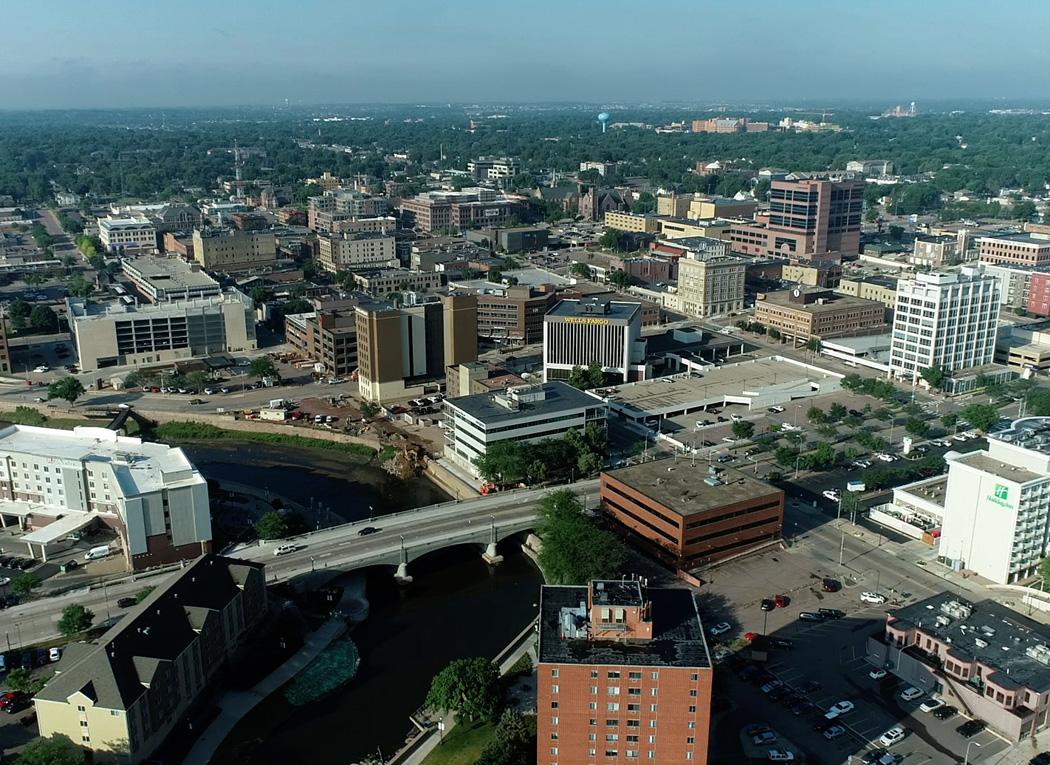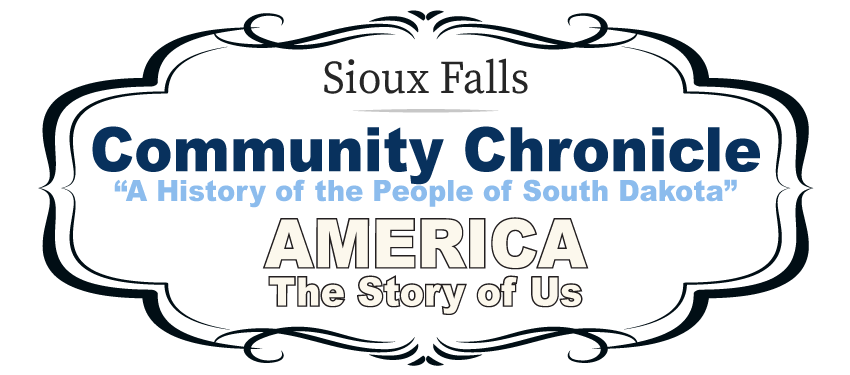
Local Affairs:
Sioux Falls, SD

Our city is a Home Rule Charter City, founded between 1840 and 1850. As people came to the area known as the Great Bend of the Sioux River beginning as far back as the 1836, events soon began to formalize when the Western Town Company, an private company, led by businessmen and women from Iowa came to the area with the purpose of forming the Village of Sioux Falls in 1857. They were soon joined by businessmen, and politicians from St. Paul, Minnesota when the Dakota Land Company arrived in 1862, as they created Sioux Falls City. However, by 1866, the two towns became abandoned, when members of the Sioux Tribes began interfering creating conflicts among the townsfolk, which led to their abandonment of the two townsites.
By the mid 1870's, Americans from the former towns began to come back to the area, and by 1879 they had organized, to form the Town of Sioux Falls, which now would be led by a Mayor and four Commissioners occupying pretty much the same surface area as the previous tenants had a decade prior.
By the Industrial Revolution, Americans pushed westward more frequently, and this placed the Town of Sioux Falls, and it's lavish, abundance of natural resources, minerals, the bedrock, and of course the 'river' as one of the top destinations for early pioneers, and the town has seen steady population growth for years, while the periods between 1930-1950 saw the greatest population boom in its history, with the addition of the Federal Airforce Radio Base, adding nearly 30,000 new residents practically overnight.
Our Organic Period (1836-1886)
A period of which early American Pioneers were coming to the Area of the Great Bend of the Sioux River. During this period, the original framework of our society was being formed, created, and built. Early migration into the town corresponded with the mass migration of early German, Dutch, Polish, Norwegians coming to America between 1830 to 1850. They slowly began traveling westward to what was then, Dakota Territory, bringing with them their traditional methods of farming, their protestant beliefs grounded in Lutheranism, and their strong sense of morals, values, and beliefs in both politics, and economic trade. They in turn, had laid down the early concepts to how the town would be governed by.
Economic Development Period (1887 to 1937)
This second phase of development began with the early developments along the river, building the Queen Bee Flour Mill, the Destruction of Seney Island and Cascade Water-Falls, to the paving the way to attract Sioux Steel, Pitts Steel, and the Milwaukee Railroad, all of whom would share properties along the river, helping to build the Town of Sioux Falls in the years ahead. During this period, the massive flood walls would be built on top of Second Island between 10th Street, north to 7th Street, the New City Hall would be built by 1936, and the birth of Urban Redevelopment would begin during this period with the inception of the towns first Planning and Zoning Ordinances.
Urban Redevelopment or Renewal (1938 to 1988)
The third leg of developing the Town of Sioux Falls began during World War II with the passage of the Federal adopted Urban Renewal. Under this movement, many of the older buildings along the river were bull-dozed, and torn down, many of which were made of wood and stone. Many of these early buildings had been destroyed by the many floods prior to 1940, of which we had no choice but to replace, however, during this period, the residents would build the Downtown River Ramp, the Federal Airforce Radio School (base), Create the Pedestrian Mall by closing part of North Phillips Avenue, to establishing the River Green Way and Bicycle Pathway following the River itself. It was during this time period, the Town of Sioux Falls, East Sioux Falls, West Sioux Falls, South Sioux Falls all came together to form the Municipality of Sioux Falls by 1972, and by the end of this period the property owners of the Town, formed the Mainstreet Business Improvement District, or Downtown Sioux Falls in 1989, of which leads us into the next development era, and the birth of a new concept for city government.
Shape Sioux Falls Economic Development (1989-Present Day)
That brings us to the fourth economic development period, which began with the movement to adopt our Home Rule Charter, of which would create a Strong Mayor, and Strong City Council form of government. With this more perfect government, the earlier townsites created that central government of which now will overlook "Shaping Sioux Falls" long into the future. The continued development of Downtown, but with it, the Expansion of the River Green Way, by completely remaking the area along the River into a Boardwalk. Shape Sioux Falls is more about the long term sustainability of the city itself, adding new style amenities, event centers, becoming a smart city, and forming stronger bonds between landowners, property holders, and businesses, all of which have led to becoming one of the wealthiest cities in the country. Today Sioux Falls has become one of the top tourist destinations in South Dakota, while the continued modernization of its namesake, Falls Park becomes more of a top economic footprint for the city today.
The City of Sioux Falls today has a net position of nearly $2,500,000,000 billion dollars, and that is amazingly high for a city its size, let alone for cities such as New York City or Los Angeles. Any city in America would love to have the financial stability that Sioux Falls has today. With a population pushing 230,000 residents in the near future, this town has been built by the hard work of early farmers, businessmen, and women, let alone the continued dedication to morals, values, and the protestant faith. It is safe to say, the residents of Sioux Falls have lost touch with their founding principles. We have become a successful city today, based on the early cornerstone beliefs, work ethics, and lifestyles of our ancestors way back in the mid 1800's. The Little Town on the Prairie, built within a massive surface area, in an era that has come to be referred to as The Great Bend of the Big Sioux River!

- What is the Power Behind a City & How Does that City Operate Today?
- Mayor Revisiting & Changing Sustainability Plan
- Who Needs More than 10 Video Lottery Machines?
- TIF's • The Preferred Financial Tool?
- Sioux Falls Enters Into Public-Private Agreement
- The West Sioux Business Improvement District?
- Capital Improvement Projects
- Major Plans for South Louise?
- Active Transportation Board
- 6TH Street Bridge
- City Of Sioux Falls Proposes 20% Rate Increases To Fund Water And Water Reclamation
- Alcohol License Silent Bid Process




